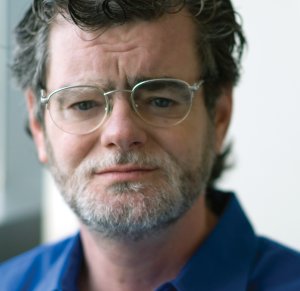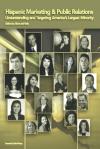Posted by Elena del Valle on July 31, 2008

Soulmates by Suzan Wolters
Art: Soulmates by Suzan Wolters
In spite of the social stigma associated with being overweight one quarter of the adult population in the United States is obese as defined by Center for Disease Control and Prevention (CDC) standards of weight. To address the issue of obesity several years ago the leadership of that organization set a goal to reduce the number of obese people to 15 percent of the adult population by 2010. That may be a lofty goal since not a single state has reached it.
Obesity exceeds 30 percent in three states, Alabama, Mississippi and Tennessee; and one quarter of states have 25 percent obesity levels. The state with the lowest obesity is Colorado and 19 percent of adults in that state are obese.
To find out the state of obesity in the country the CDC analyzed the results of a national telephone survey, the 2007 Behavioral Risk Factor Surveillance System (BRFSS), a random-digit–dialed telephone survey of the country’s civilian population 18 years of age and older by state. Among ethnic minorities 36 percent of blacks and 28.5 percent of Hispanics were obese.
College graduates, men and women, were the least likely to be obese. Men who responded to the survey and had graduated from college reported 22 percent obesity; women respondents who had graduated from college reported 17.9 percent obesity.
From a geographic perspective, residents of Southern states were most likely to be obese, 27 percent; while the Midwest region showed 26.5 percent; the Northeast region had 24.4 percent; and the West had 23.1 percent.
The CDC determines obesity using height and weigh to establish a person’s body mass index. For example, a 5 foot 9 inch adult with a weight of 203 pounds has a body mass index of 30 and is considered obese.
The mission of the CDC is “to promote health and quality of life by preventing and controlling disease, injury, and disability.”
“Happy for No Reason” audio recording

Presenter Marci Shimoff, author, Happy for No Reason
What: An audio presentation by Marci Shimoff and Q&A with Marci Shimoff and HispanicMPR.com audio program host Elena del Valle about finding happiness.
Available exclusively on HispanicMPR.com!
What you receive: Downloadable recording of a 39-minute audio presentation “Happy for No Reason” and a bonus 50-minute interview of Marci Shimoff.
Ready to buy? Select a format to add to your shopping cart:
Downloadable MP3 of Happy for No Reason $119.95
Audio CDs of Happy for No Reason $139.95
More information on “Happy for No Reason” audio recording with Marci Shimoff
Posted by Elena del Valle on July 29, 2008

Coca-Cola’s Full Throttle Blue Demon energy drink
Photo: The Coca-Cola Company
Hispanics represent 27 percent of the total energy drink volume consumed in the United States. In late 2006, recognizing a desirable market when they saw it, marketers at The Coca-Cola Company decided to target blue collar Latino men 20 to 30 years of age with a new energy drink. For inspiration they relied on the Blue Demon, a Mexican luchador (wrestler) and movie star. In almost two years, Full Throttle Blue Demon, has nearly doubled in volume from the company executives’ original projections.
According to company representatives, Full Throttle Blue Demon has become the key growth product for the Full Throttle product line. In addition, Blue Demon has helped the Full Throttle trademark create a connection with young Hispanic men, a segment the company considers a key target audience.
Full Throttle Blue Demon is available in stores nationwide in Blue Agave flavor in 16 and 24-ounce cans. It contains caffeine, ginseng extract, Taurine, Guarana extract and B vitamins.
“Best in Class Hispanic Strategies” audio recording


Presenters Carlos Santiago and Derene Allen
-
Find out what makes 25 percent of the top 500 Hispanic market advertisers out perform the remaining companies
-
Discover what questions to ask, steps to take to be a Best in Class company
Click here for more about “Best in Class Hispanic Strategies” audio recording
In order to connect with Latino consumers it’s important to make specialty products readily in Hispanic oriented retail stores, according to Reinaldo Padua, assistant vice president of Hispanic Marketing, Coca-Cola North America, who discussed the company’s marketing strategies by phone.
It’s also important for the message to connect with the target audience and to understand that the reality of United States Hispanics is different from other market segments in the country.Since the launch of Full Throttle Blue Demon Coca-Cola marketers have promoted the drink via a national Spanish and English-language advertising campaign, in-store sampling and merchandising, public relations programs and a mobile promotional tour.

Full Throttle Coffee
Coca-Cola recently announced another product in the Full Throttle line, Full Throttle Coffee, a coffee and energy blend. The new beverage, which may appeal to the same demographic as the Blue demon, will first become available in the U.S. Pacific Northwest and Southeast regions before rolling out nationally in August 2008.
Executives hope to make further inroads among young men seeking an energy boost with the new energy coffee drink. The beverage is made with 100 percent premium Colombian Arabica coffee and the Full Throttle energy and vitamin blend. It will be available in 15-ounce aluminum cans.
“Guys are increasingly looking for great-tasting beverage options that will give them the extra ‘kick’ they need to conquer their day,” said Rafael Acevedo, senior brand manager, Energy Drinks, Coca-Cola North America. “Full Throttle Coffee combines the smooth, rich taste of coffee with the intensity that you can only get from a Full Throttle Energy Drink.”
Full Throttle Blue Demon and Full Throttle Coffee are part of the Full Throttle line which combines tropical citrus flavor in an energy drink. According to the company website, Coca-Cola produces 450 brands and 2,800 beverages. Consumers drink 1.5 billion servings of its products per day.
Make your ads resonate with Hispanics
Listen to C&R’s Research Director Liria Barbosa in
“Hispanics’ Perspective on Advertising” audio recording

Liria Barbosa gives a presentation and participates in an extended Q&A discussion about
• Type of ads Latinos prefer
• Latino top media choices
• Percent of Latinos who tried products because of ads
• Percent of Latinos who purchased products because of ads
• What makes an ad “Hispanic”
• If ad language is important for bicultural Latinos
• What to keep in mind when targeting bicultural Latinos with ads
Click here for information on Hispanic Perspectives on Advertising
Posted by Elena del Valle on July 28, 2008

Mark Potok, director, Intelligence Report of SPLC
Photo: Mark Potok
A podcast interview with Mark Potok, director, Intelligence Report, Southern Poverty Law Center is available in the Podcast Section of Hispanic Marketing & Public Relations, HispanicMPR.com. During the podcast, he discusses anti Latino hate groups with Elena del Valle, host of the HispanicMPR.com podcast.
As editor of the Southern Poverty Law Center’s Intelligence Report magazine, Mark leads an operation that monitors the extreme right in the world today. In addition to editing the magazine, Mark acts as a spokesman for the SPLC, a well-known civil rights organization based in Alabama. He has testified before the Senate and the United Nations High Commission on Human Rights.
Before joining the Southern Poverty Law Center in 1997, Mark spent almost 20 years as a reporter at newspapers including USA Today, the Dallas Times Herald and The Miami Herald. While at USA Today, he covered the 1993 siege in Waco, the rise of militias, the 1995 Oklahoma City bombing and the trial of Timothy McVeigh.
Find out which Latino markets are booming with
“The Next Step: Secondary Latino Markets” audio recording

Presenter Dora O. Tovar, MPA
Click here for information on Secondary Latino Markets
In 1996, his editors nominated him for a Pulitzer Prize for a package of stories on racism in Texas public housing. The Intelligence Report he edits recently received the 2007 Investigative Award part of the Utne Independent Press Awards.
To listen to the interview, scroll down until you see “Podcast” on the right hand side, then select “HMPR Mark Potok,” click on the play button below or download the MP3 file to your iPod or MP3 player to listen on the go, in your car or at home. To download it, click on the arrow of the recording you wish to copy and save it to disk. The podcast will remain listed in the July 2008 section of the podcast archive.
Make your ads resonate with Hispanics
Listen to C&R’s Research Director Liria Barbosa in
“Hispanics’ Perspective on Advertising” audio recording

Liria Barbosa gives a presentation and participates in an extended Q&A discussion about
• Type of ads Latinos prefer
• Latino top media choices
• Percent of Latinos who tried products because of ads
• Percent of Latinos who purchased products because of ads
• What makes an ad “Hispanic”
• If ad language is important for bicultural Latinos
• What to keep in mind when targeting bicultural Latinos with ads
Click here for information on Hispanic Perspectives on Advertising
Posted by Elena del Valle on July 25, 2008

The 2008 Official Public Relations Salary & Bonus Report
Public relations and human resources executives are the target audience for The Official Public Relations Salary & Bonus Report 2008 Edition, a 13-page spiral bound summary of public relations salaries and bonuses across the country. The report, published since 1996 by New York City based Spring Associates, Inc., sells for $399.
The report is compiled and analyzed from the Spring Associates private database of 20,000 credentialed individuals who work in public relations. According to promotional materials, random survey methods of data gathering are not used. Representatives from the company collate the data on a daily basis during direct communications with public relations executives.
The 2008 report indicates average corporate communications base salaries went up 3.8 percent and public relations agency salaries increased 3.9 percent. The report outlines eight cities with the greatest number of public relations practitioners: New York, Atlanta, Chicago, Los Angeles, Boston, Dallas, Washington, D.C., and San Francisco. Salaries in these cities combined increased 4.2 percent for agencies and 4 percent for corporate communications departments.
Over the past years, Spring Associates analysts have concluded that once salaries and other benefits are taken into account public relations practitioners in corporate America are better compensated than their agency counterparts.
Spring Associates is a 28 year old executive search company founded by Dennis Spring. Its staff assist companies seeking to hire professionals in public affairs, consumer marketing, investor relations, corporate communications, marketing communications, speech writing, employee communications, financial communications, media relations, medical/health care, and hi-tech (dot com, e-commerce, e-retail).
“Happy for No Reason” audio recording

Presenter Marci Shimoff, author, Happy for No Reason 7 Steps to Being Happy from the Inside Out (Free Press, $24.95) and president Esteem Group
What: An audio presentation by Marci Shimoff and Q&A with Marci Shimoff and HispanicMPR.com audio program host Elena del Valle about using your energy to attract clients and customers.
“Happy for No Reason” audio recording consists of 89 minutes of useful insights and information by the internationally famous author and speaker.
Available exclusively on HispanicMPR.com! For your convenience you may also purchase these materials on audio CD’s.
What you receive: Downloadable recording of a 39-minute audio presentation “Happy for No Reason” and a bonus 50-minute interview of Marci Shimoff.
Ready to buy? Select a format to add to your shopping cart:
Downloadable MP3 of Happy for No Reason $119.95
Audio CDs of Happy for No Reason $139.95
More information on “Happy for No Reason” audio recording with Marci Shimoff
Posted by Elena del Valle on July 24, 2008

Photo: PublicDomainPictures.net/Mark Coldren
According to a recently released report from the Tomás Rivera Policy Institute (TRPI) and the Asian Pacific American Legal Center (APALC), people with limited English abilities and immigrants are less prepared for disasters than other segments of the population. These group are sometimes excluded from educational efforts and emergency response plans.
To prepare the report, “Disaster Preparedness in Urban Immigrant Communities: Lessons Learned from Recent Catastrophic Events and Their Relevance to Latino and Asian Communities in Southern California,” the researchers observed Latino and Asian immigrant communities in Southern California for disaster education and response preparation plans. The long term goal of the study is to improve disaster awareness among immigrant community members, and assist emergency personnel to improve the service they provide to limited English speaking populations.
The researchers found: it was difficult to locate disaster preparedness materials in languages other than English; insufficient bilingual staff and volunteers among emergency response personnel and organizations who provide assistance during emergencies; although there are plenty of ethnic media outlets that could facilitate emergency preparedness and educational efforts, they are not being used widely; and there is concern that immigrants may refrain from requesting assistance in an emergency for fear of revealing their illegal immigration status.
The researchers recommend in the report that federal and state governments establish basic secondary language resources; and that local agencies create informational materials and response plans to meet the language needs of the communities they serve.
The Tomás Rivera Policy Institute is one of the premier policy institutes that seeks to advance insightful thinking on key issues affecting Latino communities. The Institute is an independent, nonprofit organization that is an affiliated research unit of the School of Policy, Planning, and Development at the University of Southern California.
Founded in 1983, the Asian Pacific American Legal Center is a nonprofit organization dedicated to advocating for civil rights, providing legal services and education, and building coalitions to positively influence and impact Asian Pacific Americans and to create a more equitable and harmonious society. APALC is affiliated with the Asian American Justice Center (formerly NAPALC) in Washington, D.C.
Target Latinos effectively by anticipating changes in the market with
“Hispanic Projections with 2007-08 update” audio recording

Presenter Roger Selbert, Ph.D.
Find out
- About Latino buying power growth in the future
- How Latino market growth compares with other markets in the U.S.
- What drives the rise of Latino economic clout
- Who should target the Latino market
- What is the size of the Hispanic affluent market
- If the luxury Latino market is growing
Stay ahead of your competition with “Hispanic Projections”
Posted by Elena del Valle on July 23, 2008

Photos: Public Domain Pictures/Anna Cervova, Braille Institute, RL Public Relations
According to a Greenfield Online/Mintel April 2008 report, ethnicity affects the type of glasses survey respondents wear. Of those surveyed half of whites, blacks and Hispanics use bifocals while most Asians use regular glasses. These findings can be explained in part by the higher average age of whites and blacks.
It is also related to differences in household income: According to the U.S. Census Bureau, the average household income for Asians is $64,000 but only $48,000 for the average United States citizen. The higher income makes other vision correction options available and more likely for Asians like contacts and vision correction surgery.
The Mintel study also indicates more black and Hispanic consumers use colored or tinted contacts compared to other ethnic groups. These individuals are more likely to take advantage of colored contacts as a fashion accessory offering them hazel, blue or green eye colors. At the same time, Asian and Hispanics respondents expressed greater interest in corrective surgery.
“Segmentation by Level of Acculturation” audio recording

Presenter Miguel Gomez Winebrenner
Discusses
- Assimilation versus acculturation
- Factors that affect Latino acculturation
- How to know if someone is acculturated
- Number of years necessary for acculturation
- Effects of immigration debate on acculturation
- Three main ways of segmenting Latinos
Click here for details about “Segmentation by Level of Acculturation”
As Latinos age the rate of vision loss among adults over 40 increases. Many vision loss diseases prevalent among Hispanics, like glaucoma and diabetic retinopathy, can lead to blindness if left untreated. At the same time 41 percent of Hispanics in Los Angeles have very little knowledge about vision health or vision-loss diseases, according to a Survey of Public Knowledge, Attitudes, and Practices (KAP) Related to Eye Health and Disease conducted by the National Eye Institute in 2002.
Looking at the number of individuals in the communities it serves, the Braille Institute, a California non profit organization, realized it was necessary to focus closely on under served groups who need assistance and may not be aware it’s available. The organization has plans to reach out to Spanish speaking elderly Latinos in the Los Angeles metro area to draw their attention to issues of eye health care and vision loss prevention. To accomplish this goal the organization hired an independent agency, RL Public Relations (RLPR).

How someone with an eye illness might see an eye chart
“El Poder Sin Ver is a program Braille Institute created to specifically target the need for low vision services in the Latino community. We are planning a monumental community outreach effort to spread the word about our free services, all of which help people learn how to live a fulfilling life, even if their vision isn’t as good as it used to be,” said Courtney Goines, media relations manager, Braille Institute of America, Inc.
Difficulties with communication, lack of insurance, low income and cultural differences in health behaviors make the Hispanic population especially vulnerable to poor access to vision care. With the help of RLPR the institute hopes to increase awareness about the high incidence of vision loss among Hispanics in the Southern California community, and educating Hispanic elders about ways they can prevent and treat eye disease.

Roxana Lissa, CEO and founder, RL Public Relations
“We believe in spearheading public relations campaigns for socially-responsible organizations, especially if the good intention is geared towards the Hispanic community,” said Roxana Lissa, chief executive officer and founder of RLPR
The Braille Institute campaign will target Spanish-dominant Latino seniors (the group most affected by vision loss) in Los Angeles as well as those who influence their decisions, adult children, relatives and health care providers. The account will be led by Yanka Burgos, vice president out of the company’s Los Angeles office.
The agency plans to conduct a media outreach initiative focusing on outlets that reach Hispanic seniors in Los Angeles and those who influence them. As part of the campaign’s grassroots efforts agency representatives plan to reach out to community based organizations to promote Braille Institute services and provide information about eye health care in Spanish.
Braille Institute services are free and many of their counselors are already bilingual; some classes are provided in English and Spanish. The mission of the Braille Institute is to eliminate blindness and severe sight loss as a barrier to a fulfilling life.
Founded in the United Kingdom 35 years ago, Mintel is a supplier of consumer, media and market research. The company, with offices in Chicago, London, Belfast, Sydney and Shanghai, has been studying the United States Hispanic market since 2003.
Hispanic Marketing and Public Relations Understanding and Targeting America’s Largest Minority book

“A must resource for practitioners/professionals expecting to reach US Hispanics; also valuable for college programs in marketing, public relations and communications. Highly recommended.”
Choice magazine
Click here for information on the Hispanic Marketing & Public Relations books
Posted by Elena del Valle on July 17, 2008

John Moore, CTO and vice president of development, eTapestry
Photos: eTapestry
In 2006, eTapestry, an Indianapolis-based company, began creating a multilingual version of its on-demand fund raising software at the request of Spanish-speaking clients in San Diego, Miami, and Houston. After receiving positive feedback from early adopters, the developers made changes necessary to expand the eTapestry software into broader domestic and international markets allowing eTapestry to release a Spanish language version of the fund raising software in early July 2008.
“With eTapestry users accessing their data from points all over the globe, it was plain to see that eTapestry’s on demand software was opening up new opportunities for organizations everywhere,” said Jay Love, chief executive officer, eTapestry.
The Spanish language software was initially developed to help organizations who have some users who want to use the database in English, and other users who prefer Spanish. Company representatives believe the new Spanish language version is also ideally suited for organizations in Mexico, Latin America, and other Spanish speaking locales.
The target audience for the software is nonprofit organizations. According to a company representative, customers range from very small organizations with just a few hundred records to large organizations with hundred of thousands of records.
This is the first time company representatives have targeted the United States Latino market. The company promoted the new software by distributing a press release recently; and showcasing it during seminars, shows, and presentations.
“The need for automation and data segmentation is universal, but from the very beginning, eTapestry was architected with an eye toward offering the product on an international scale,” said John Moore, chief technology officer and vice president of development, eTapestry.
Target Latinos effectively by anticipating changes in the market with
“Hispanic Projections with 2007-08 update” audio recording

Presenter Roger Selbert, Ph.D.
Find out
- About Latino buying power growth in the future
- How Latino market growth compares with other markets in the U.S.
- What drives the rise of Latino economic clout
- Who should target the Latino market
- What is the size of the Hispanic affluent market
- If the luxury Latino market is growing
Stay ahead of your competition with “Hispanic Projections”
“This framework allows eTapestry to concentrate on how nonprofit organizations run their business rather than the traditional maintenance overhead of maintaining multiple versions of the software. Being a Software as a Service (SaaS) offering, we are positioned to rapidly evolve the product in a new market. We don’t have the limitation of client-installed software so our release cycle can be very aggressive. The customers will realize the benefits much quicker because their suggestions are incorporated into the product within a few weeks rather than months.”
ETapestry users pay a monthly rate based on the size of the database and number of concurrent users. It starts at $36 per month for one user and up to 1,000 records. The cost for 1,000 to 5,000 records is $112 per month and the pricing increases accordingly depending on the number of records. Additional services are offered a la carte, allowing each organization to add extra services at their discretion.
The Spanish language software launch complimented the international development plans of Blackbaud, eTapestry’s parent company. Now the two companies are working together to introduce eTapestry Espanol to Latin America.

Andrew Mosawi, vice president, Blackbaud
“The nonprofit community in Latin America is rapidly growing and needs software to better manage donor relations and overall accountability,” said Andrew Mosawi, vice president of international business development, Blackbaud. “It is a market that has been under served by the nonprofit software industry thus far, and we are pleased to provide an on-demand solution that is tailored to the unique needs of these growing organizations.”
Founded in 1999, eTapestry is a web-based donor database and communications management system that delivers software over the Internet, allowing access from desktops, laptops and mobile devices. The company offers its 3,000 customers website development, e-commerce and advanced email tools.
Hispanic Marketing and Public Relations Understanding and Targeting America’s Largest Minority book

“A must resource for practitioners/professionals expecting to reach US Hispanics; also valuable for college programs in marketing, public relations and communications. Highly recommended.”
Choice magazine
Click here for information on the Hispanic Marketing & Public Relations books
Posted by Elena del Valle on July 15, 2008

Cathy Baron Tamraz, president and CEO, Business Wire
Photos: Business Wire, impreMedia
Last week, Business Wire launched LatinoWire, a multi-channel service targeting United States Latinos in English and Spanish. Business Wire executives hope an exclusive distribution relationship with impreMedia, a major player in the market, announced at the same time will boost the service.
Business Wire representatives estimate tens of thousands of individuals and 1,200 media across the country, including 30 impreMedia online and print outlets, will receive their LatinoWire press release materials.
“LatinoWire is reaching the publications and media that the market relies on,” said Tom Becktold, senior vice president, Marketing at Business Wire. “We know that there is a large amount of interest because of past distribution through third parties. We think this is going to be extremely well received, especially with impreMedia.”
“Best in Class Hispanic Strategies” audio recording


Presenters Carlos Santiago and Derene Allen
-
Find out what makes 25 percent of the top 500 Hispanic market advertisers out perform the remaining companies
-
Discover what questions to ask, steps to take to be a Best in Class company
Click here for more about “Best in Class Hispanic Strategies” audio recording

Arturo Duran, chief executive officer, impreMedia Digital
“We are extremely pleased to partner with Business Wire and to bring Business Wire’s LatinoWire content to our online readers on an exclusive basis,” said Arturo Duran, chief executive officer of impreMedia Digital. “Through our unique partnership, impre.com users will have the ability to receive news directly from the companies making announcements, all with one convenient click. We believe that this is a significant benefit for those who come to impre.com for the latest in business and financial news affecting the Hispanic community.”
Although Business Wire staff have blanketed as many Spanish language publications as possible, the majority of the reach of the new service will be to English language publications. The idea, said Becktold by phone from California, is to reach consumers of English and Spanish language media. In Los Angeles, for example, LatinoWire reaches the Los Angeles Times in English and La Opinion in Spanish.
Business Wire has received much positive feedback in relation to LatinoWire. From a resources perspective the company’s interest is evidenced by the assignment of a dedicated team to the new service launch. Not all Business Wire services receive that kind of support. Four full-time staff will work on LatinoWire and between eight and ten staff will dedicate part of their time to the new Latino oriented service.
“Moving Beyond Traditional Media Measurement: measuring conversations and social media” audio recording

Presenter Katie Delahaye Paine, founder, KDPaine & Partners
Find out about
- Issues affecting online public relationships today
- Testing relationships as part of a survey
- Measuring ethnic group relationships
- Measuring foreign language communications in a similar ways to English
- Biggest challenges measuring conversations and social media
- Measuring online relationships with little or no money
Click here for information on “Moving Beyond Traditional Media Measurement”
“ImpreMedia has quickly established itself as the nation’s premier Hispanic multimedia company, providing unparalleled access to a highly desirable demographic audience,” noted Cathy Baron Tamraz, president and chief executive officer, Business Wire. “We are extremely proud to be affiliated with the dominant leader in a market destined to grow in importance.”
LatinoWire news will reach reporters through a direct publication feed via the company’s proprietary annex system. Major wire services like Associated Press and Notimex also will receive the updates. As part of the partnership with impreMedia, LatinoWire news releases will have guaranteed placement on impreMedia websites. This placement will be distinct from the publications’ editorial content.
ImpreMedia is a leading publisher of Spanish language newspapers in the country. The company owns publications in 17 cities and has 26 online and print properties targeting the United States Hispanic population.
Business Wire, a Berkshire Hathaway company, is utilized by member companies and organizations to transmit their news releases, regulatory filings, photos and other multimedia content to journalists, news media, trade publications, institutional and individual investors, financial information services, regulatory authorities, Internet portals, information web sites, business-to-business decision-makers and consumers.
Posted by Elena del Valle on July 10, 2008

Photo: Simon & Baker
Latino labor growth has slowed down due to America’s economic woes and the construction industry recession, and working age immigrant Latinos represent a lesser percent of the overall Hispanic labor pool than in the recent past. These are the findings of a recent Pew Hispanic Center report on labor and Latinos trends in the United States.
In spite in the decreasing growth opportunities, there are no indications that immigrant Latino workers are leaving the country, according to Latino Labor Report, 2008 written by Rakesh Kochhar, associate director for Research, Pew Hispanic Center. Latinos represent 14 percent of the United States labor pool and more than half, 52 percent, of working age Latinos are immigrants.
Target Latinos effectively by anticipating changes in the market with
“Hispanic Projections with 2007-08 update” audio recording

Presenter Roger Selbert, Ph.D.
Find out
- About Latino buying power growth in the future
- How Latino market growth compares with other markets in the U.S.
- What drives the rise of Latino economic clout
- Who should target the Latino market
- What is the size of the Hispanic affluent market
- If the luxury Latino market is growing
Stay ahead of your competition with “Hispanic Projections”
As a result changes in the Latino working population may have a limited impact on the overall working population. Nonetheless, it is noteworthy that Hispanic unemployment in the first quarter of 2008 was much higher than non Hispanic employment, 6.5 percent versus 4.7 percent. This data is in marked contrast with labor statistics of less than two years ago.
In late 2006 the difference in unemployment between Latinos and the mainstream was only .5 percent, 4.9 percent for Latinos compared to 4.5 percent for non Latinos. Immigrant workers have been affected more than most. For example, for the first time in five years more foreign more born Latinos than native born Latinos were unemployed.
In the last year, changes in the construction industry caused a drop of 250,000 jobs among Latinos and eliminated existing job growth within that working group. This is significant because for years construction represented the largest growth industry for Hispanic workers, especially among immigrants. Of the 221,000 Latino workers who left jobs in construction last year, 152,000 were people who had migrated from Mexico.
In 2007, Latino women suffered in greater numbers than their male counterparts, leaving the labor force in great proportion and showing more unemployment than Latino men. There were 130,000 Latino women who became unemployed last year and unemployment among Latino women increased from 5.6 percent to 7 percent.
The report was based on the Pew Hispanic Center’s analysis of recent Bureau of Labor Statistics and Census Bureau data, mainly the Current Population Survey. The Pew Hispanic Center, an initiative of the Pew Research Center, is a non-partisan, non-advocacy research organization based in Washington, D.C. The Pew Hispanic Center is funded by The Pew Charitable Trusts.
Hispanic Marketing and Public Relations Understanding and Targeting America’s Largest Minority book

“A must resource for practitioners/professionals expecting to reach US Hispanics; also valuable for college programs in marketing, public relations and communications. Highly recommended.”
Choice magazine
Click here for information on the Hispanic Marketing & Public Relations books
Posted by Elena del Valle on July 9, 2008

Tecate Light store floor ad
Photo, video: Tecate Light
Mexican beer maker Fomento Economico Mexicano, S.A. de C.V. (FEMSA) and Heineken USA, importers of Tecate Light, hope to attract acculturated Mexicans and Mexican-American adults in the United States with a newly released two-language multimedia ad campaign. The brand’s first dual-language ad campaign was launched June 30, 2008 in general market and Spanish language media outlets and will run through the end of 2008. Scroll down to watch a Tecate Light video ad.
The ad makes up two distinct executions under the same tag line, “Para los que quieren más,” Spanish for “For those who want more.” The English-language ads invite Mexican-American men to “break the habit” of drinking less-flavorful light beers in favor of Tecate Light.
To achieve this, two separate 30-second TV spots present men acting out their favorite guilty pleasures, such as watching telenovelas (Spanish language soap operas) and talking loudly on their cell phone, while drinking a generic light beer. In each spot, Marco Uriel, a Mexican actor chastises men for their bad beer drinking habits and invites them to try Tecate Light beer.
Make your ads resonate with Hispanics
Listen to C&R’s Research Director Liria Barbosa in
“Hispanics’ Perspective on Advertising” audio recording

Liria Barbosa gives a presentation and participates in an extended Q&A discussion about
• Type of ads Latinos prefer
• Latino top media choices
• Percent of Latinos who tried products because of ads
• Percent of Latinos who purchased products because of ads
• What makes an ad “Hispanic”
• If ad language is important for bicultural Latinos
• What to keep in mind when targeting bicultural Latinos with ads
Click here for information on Hispanic Perspectives on Advertising
The Spanish-language Tecate Light campaign plays off the concept that Mexican men in the United States shouldn’t have to settle for a less flavorful beer than what they’re used to. The “Papás” 30 second TV spot features distraught Mexican parents who share a testimonial to their adult son in the United States and their disappointment in his choice of light, flavorless beers.
“As the most popular light cerveza in Mexico, we believe it’s important to converse with our consumers in the language that they feel most comfortable. With the continued growth of the U.S. Hispanic population, and especially the second and third generation Mexican-Americans populations, we wanted to create a campaign that addresses their intrinsic yearning for more flavor in their beer,” said Carlos Boughton, brand director for Tecate and Tecate Light.

Carlos Boughton, brand director, Tecate and Tecate Light
The spots in Spanish will air in Tucson, Albuquerque and San Antonio while the two 30-second TV spots in English will air on ABC, CBS, FOX and NBC; as well as several cable channels including ESPN, History Channel, and Discovery Channel. Additionally, the Spanish-language counterpart ads will be seen on Univision, Telemundo and Telefutura throughout the 20 markets where Tecate Light is available. Print ads will run in the July issue of Maxim en Español. There will also be radio, out-of-home and point of sale components to the campaign.
The campaign work is divided between three agencies: the creative concept was developed by Adrenalina; MediaVest New York will place the ads; and Formula PR will handle public relations efforts to support the campaign.
“According to Census figures, the largest growth segment of the Hispanic population is not immigrants, but the children of immigrants who tend to be different beyond simply the language they speak,” said Manuel Wernicky, founder and principal of Adrenalina. “This is an innovative campaign because we recognized that there are two different types of consumers of Mexican descent, which is why we created two unique campaigns under one brand platform instead of simply translating the same work in English and Spanish. This is not a one-size-fits-all campaign.”
“Best in Class Hispanic Strategies” audio recording


Presenters Carlos Santiago and Derene Allen
-
Find out what makes 25 percent of the top 500 Hispanic market advertisers out perform the remaining companies
-
Discover what questions to ask, steps to take to be a Best in Class company
Click here for more about “Best in Class Hispanic Strategies” audio recording
Since 2004, as part of an agreement with FEMSA Cerveza, Heineken USA is the exclusive importer, marketer and seller of FEMSA’s beer brands in the United States. Heineken USA handles the marketing, sales and distribution of Dos Equis, Tecate, Sol, Carta Blanca, Bohemia and the new Tecate Light.
Headquartered in White Plains, New York, Heineken USA Inc. is a beer importer and a subsidiary of Heineken International B.V., a Netherlands company. Heineken USA also imports Heineken Lager, Heineken Premium Light, Heineken Dark Lager, Amstel Light, and Buckler non-alcoholic brew.
Founded in 1890, FEMSA is one of the largest integrated beverage companies in Latin America. Its subsidiary FEMSA Cerveza is one of the leading brewers in Mexico with brands that include Tecate, Dos Equis and Sol.


































